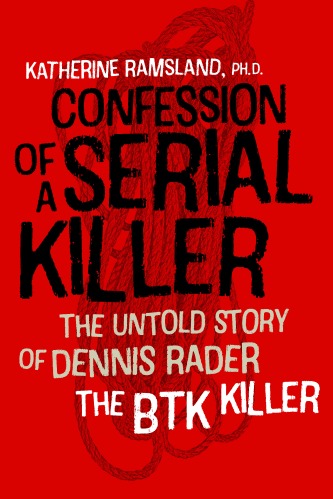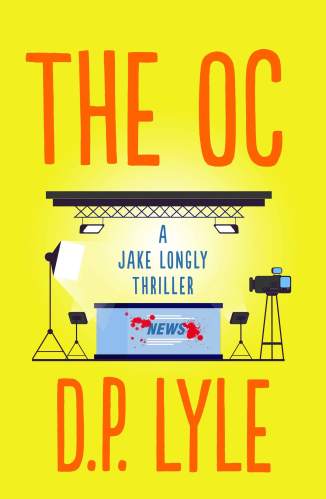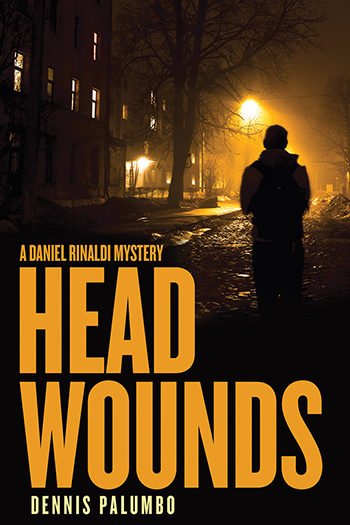
Visits to murder sites reveal more than mere curiosity.
There’s been a lot of attention lately on why people love true crime. I can recall when publishers considered the subject a waste of their time. Suddenly, it’s big business. Psychologists are weighing in, mostly guessing at the motivation. I’ve seen no representative studies on the topic, but I’ve been among true crime fans for more than two decades, so I can speak anecdotally.
I don’t think it’s because, as one expert put it, people are fascinated with evil. That’s just a superficial sense of something deeper. Crime is specific. The fascination is not with evil itself but with the formation of the motivation to harm and the development of a mind that can think up twisted and cruel treatment of others.
Extreme behavior is difficult to fathom, especially the cold-blooded kind, and TC fans want to try to understand. Women, especially, are attuned to motives and to victim predicaments. They enjoy feeling compassion and empathy. Sometimes, they identify with the woman who snaps or plans revenge.
The intensity of emotion typically involved in murder, whether a domestic homicide or a mass killing, draws us out of everyday dullness. We focus. There’s a heightened sense of suspense and thrill. For some, it also involves the cycle of being scared by what happens in the story and then feeling safe.
Another expert said that the current interest in true crime is driven by the 24/7 news cycle. It does play a part. When news anchors hype crimes with over-the-top coverage, the networks that broadcast “all crime all the time” will scoop up the story. The media certainly contributes, but possibly only to stoke a spark that is already present. The news covers other areas of life every day that don’t become obsessions; true crime stands out. So, it’s not just about 24/7 news.
We get closer to the embrace of TC when we study the core narratives that turn up in one presentation after another. Most TC books, documentaries, and TV series build up to the same resolution. They present the lure of a puzzle, provide guidelines for protection and preparation, and resolve tension by showing how the perpetrator was caught (often by being outsmarted) and punished. Thus, TC narratives play on our desires for catharsis, safety and closure. We enter through the intrigue of mystery and exit feeling better, sometimes even smarter.
Perhaps there’s an evolutionary benefit, as some psychologists suggest, in terms of making us pay better attention to dangers in our environment. Whenever I teach a course on serial killers, multiple students tell me they now lock their doors and notice people around them. But I don’t think this fully explains the fad. It’s true that TC has always fascinated, but recently it’s become much more of a cultural obsession. There’s an emotional payoff that’s become a collective pursuit.
True crime lets us experience anxiety and fear in a controlled way. It’s not happening to us, but we can work our way through it. People gawk at terrible things sometimes for reassurance. We can let ourselves imagine monsters coming for us because they can’t really get us. We purge fear within a frame of safety. As the TC community grows, we can share our “guilty pleasure” and form groups that reinforce the payoff.
Although a small sliver of the TC fan community seeks the bloodiest, most disgusting images they can find, most immerse themselves, then and get out. They’re interested in human behavior, not a gore-fest.
This brings us to visiting actual murder sites. I once wrote a travel column about tourable murder sites and I’m currently creating a presentation about “Dark Tourism.” This involves looking for sites that people visit who want to see where a murder happened: The steps of Gianni Versace’s former South Beach home, for example, where Andrew Cunanan gunned him down, or the clock tower at the University of Texas at Austin’s campus from which Charles Whitman picked off targets in August 1966 until police killed him.
It may sound morbid, but getting close to the intense energy of disturbing events initially evokes a rush. The energy of madness, anger, lust, or jealousy seems to pervade the place. People linger outside the “Amityville Horror” house where Roy Defeo shot his entire family, the home in Ohio where Jeffrey Dahmer killed and buried his first victim, and the former boarding house where kindly Dorothy Puente murdered men for their welfare checks and buried them in her garden.
In some cases, there are tours. In London’s Whitechapel neighborhood, expert guides will take you to where Jack the Ripper allegedly killed at least five women in 1888. In Wisconsin, there’s a Jeffrey Dahmer tour, and in Los Angeles, you can take any number of tours to infamous places, like where the Black Dahlia’s body (parts) were placed, where Nicole Brown Simpson was killed, or where the Hillside Stranglers dumped their victims. In Chicago, there’s an H. H. Homes tour (“The Devil in the White City”), although his actual murder castle is long gone.
You can see Lizzie Borden’s infamous former house just by walking by it in Fall River, Massachusetts, although it’s worth taking the tour inside – or getting a room. You can also see the JonBenet Ramsey murder house and the house in Villisca, Iowa, where a sensational mass murder occurred a century ago. Now it’s a museum. Another museum graces the Jesse James Farm in Kearney, MO, as well as the Sarah Winchester House in San Jose, California. Frank Lloyd Wright’s tourable Wisconsin estate, Taliesin, was the scene of a massacre in 1914.
Savannah, Georgia, hosts several genteel homes in which murder occurred. The most famous is Jim Williams’ Mercer House, the setting for Midnight in the Garden of Good and Evil, which is open to tours. Then, there’s the murder-suicide in poet Conrad Aiken’s former home. Many of the ghost tours in the historic area describe criminal incidents, but Savannah has also added a few TC tours.
New York, New Orleans, Chicago, San Francisco – practically any large city has a crime history that lends itself to tours or museums. People go to experience the details of the horrendous acts by getting as close as possible to the physical setting.
I said above that, initially, there’s a rush. This often gives way to reflection and sadness. At the sites, people learn more about the victims than they typically know. When I stood in front of the homes where Dennis “BTK” Rader killed his victims, I thought a lot more about them than about him. Whatever one might have learned from offender-centered media, the sites themselves usually humanize the victims and invite us to imagine their plight. It’s about lore, not gore.

Dr. Katherine Ramsland is a professor of forensic psychology and the assistant provost at DeSales University in Pennsylvania. She has published over 1,000 articles and 65 books, including The Psychology of Death Investigation, Forensic Investigation: Methods from Experts, Confession of a Serial Killer: The Untold Story of Dennis Rader, the BTK Killer; The Mind of a Murderer; The Forensic Science of CSI; Inside the Minds of Serial Killers, and The Forensic Psychology of Criminal Minds. She presents workshops to law enforcement, psychologists, coroners, and attorneys, and has consulted for several television series, including The Alienist, CSI and Bones. She also writes a regular blog for Psychology Today and has appeared on 20/20, Dr. Oz and numerous crime documentaries for the ID and Oxygen Networks.
Originally posted on the Psychology Today website:
https://www.psychologytoday.com/us/blog/shadow-boxing/201907/the-unique-allure-the-scene-crime







































